20 Wild Plants That Kept Our Grandparents Alive During The Great Depression
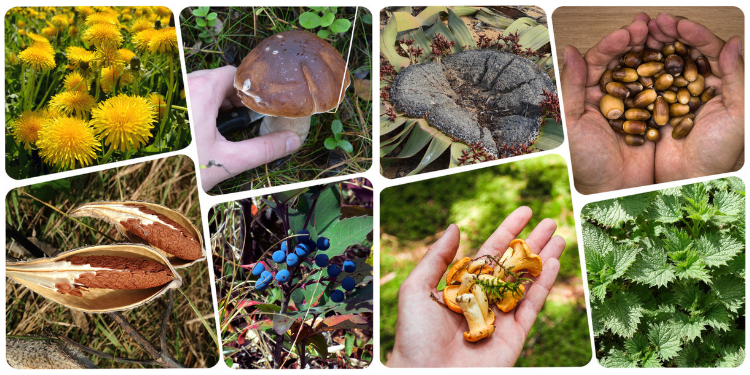
by AMY
The Great Depression initiated a deep recession in the US from 1929 through 1941. About 25% of the population was hungry, at various levels. Their poverty was deeply unsettling. Today, our grandparents remind us how fortunate we are by comparison.
The rest of the population still had to adjust their diet, and cope with rations. Only the upper class enjoyed fine cuisine, while the general middle and working-class did not need to stand in breadlines.
For the poorest, if it were not for the ingenuity of immigrant populations, who were knowledgeable about the plant world and its benefits, as well as the foraging expertise the Native American population passed down, even more, would have gone hungry.
Ironically these populations, who already had trouble establishing their credibility in the US, were sometimes regarded with skepticism for their life-saving harvesting skills.
Tumbleweeds
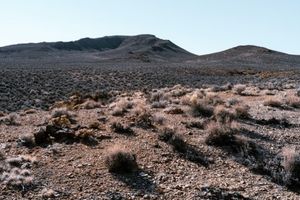 The most dramatic levels of poverty took place in the Midwest.
The most dramatic levels of poverty took place in the Midwest.
In the early 1930s, drought caused dust bowl conditions, particularly in areas like Kansas, Missouri, New Mexico, the panhandles of Oklahoma and Colorado. Droughts reduced the plant population that normally flourished.
Farming became very difficult and people had to make do with whatever was available. Fortunately, Russian immigrants had brought Russian Thistle (tumbleweed) seeds from what was then called Russia, and also Eastern Europe.
It is hard to imagine tumbleweed becoming part of a meal. However, our grandparents would chop them into salads or cook with them in soups, during the Great Depression. In the winter months, they would brine and can tumbleweeds to provide crucial nutrients.
If you want to learn more about foods you can forage for, here you will find all you need to know about the superweeds that saved large communities during the Great Depression.
Tubers
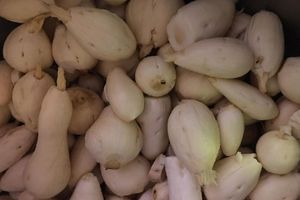 The Prairie Turnip, a member of the pea family, had been one of the most important foods that the plains Indians had taught the settlers how to use when they migrated from the east.
The Prairie Turnip, a member of the pea family, had been one of the most important foods that the plains Indians had taught the settlers how to use when they migrated from the east.
Our grandparent rediscovered the starchy root during the Great Depression, boiled it, and mashed it.
People foraged and cooked the Jerusalem Artichoke, a tuber, native to the midwestern states in the same way but sometimes ate it raw as well.
Pawpaws
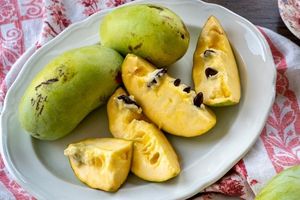 Small Pawpaw trees yielded a fruit that had a purplish-brown skin.
Small Pawpaw trees yielded a fruit that had a purplish-brown skin.
Common in the southern states, from the Atlantic to the central plains this fruit tasted somewhat like a pulpy banana.
Children in the south sang a song with the refrain, “Picking up pawpaws put them in the basket, way down yonder in the pawpaw patch.” as they gathered the fruits.
Lamb’s Quarters
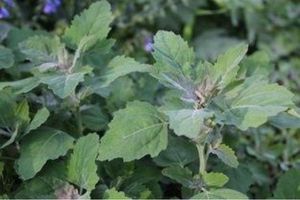 There are stories during the Great Depression of massive harvests of Lamb’s Quarters.
There are stories during the Great Depression of massive harvests of Lamb’s Quarters.
Normally fuel for livestock, this form of ‘wild spinach’ is a powerhouse of vitamins. People harvested it in such great quantities that they would fill their bathtubs with it in order to wash it.
They used in salads and side dishes, and also canned it for the winter months. Even in the city, lots of foragers could spot this precious green full of minerals to harvest when they had no other option.
Purslane also grew in abandoned lots where most plants would wither. This sprawling succulent also contained a high mineral content.
⇒ Buy Here A Kit That Has Everything You Need To Start Your Medicinal Herb Garden
Dandelions
Dandelion greens and roots were a viable option.
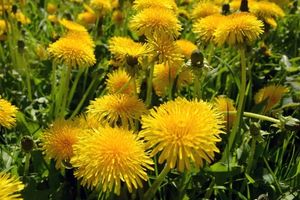
Italian immigrants primarily propagated these hearty and powerful greens and people would add them to salads, or sautee them in olive oil.
During the Great Depression, they dried roots and boiled them as a coffee substitute or added them to soups for extra nutritional value.
If you were lucky enough to have flour to make dandelion fritters with the flowers this plant provided a three-course meal.
Mushrooms
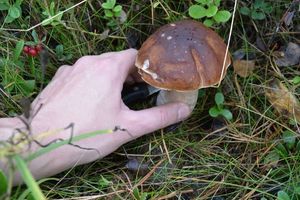 Greek immigrants were inclined to forage for wild mushrooms and taught others in damp forested areas to do the same.
Greek immigrants were inclined to forage for wild mushrooms and taught others in damp forested areas to do the same.
These fungi had incredible adaptogenic value to relieve the stresses of the times. They could be dried and stored and used in a variety of ways, fried or mixed with a carbohydrate like potatoes.
Those with ancestors from the Mediterranean, in general, knew of and used Chamomile during the Depression to ease stomach pain, subdue stress, and promote sleep. Although harder to find than some herbs, it grew in warmer climates and higher elevations in the US.
Acorns
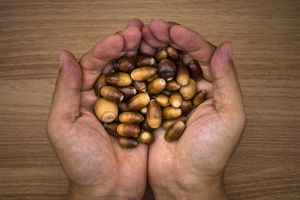 Throughout both the eastern and western parts of the country, acorns provided important nourishment for digestive systems ravaged by malnourishment.
Throughout both the eastern and western parts of the country, acorns provided important nourishment for digestive systems ravaged by malnourishment.
This gentle and nourishing ingredient was boiled and dried to make flour and boiled into mush.
Without the knowledge of the Native American population that spread throughout the Pacific Northwest and parts of the Northeast, people may not have been aware of the acorn’s value.
The Forager’s Guide to Wild Foods offers clues on how to distinguish between the various kinds of mushrooms, berries, and plants found in nature. Numerous plants go unrecognized, which is bad because many of them are thought to have medicinal properties that may replace many food ingredients while gradually harming our organs. The opportunity to learn a talent that they can utilize for years to come is what this book’s readers will value most.
Regarding the book itself, readers are provided with graphics that make sorting and scavenging easy as well as enriching knowledge.
Wild Huckleberries
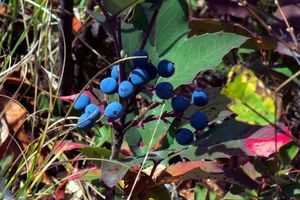 Huckleberries thrive in areas that have been burned.
Huckleberries thrive in areas that have been burned.
In 1928, eighteen years after the Great Burn of 1910 in areas of the Pacific Northwest huckleberries began to thrive. It was timely because by 1930 the government constructed access roads to create berry-picking jobs.
During the Great Depression, Huckleberries became a vital crop and source of nutrition. In an area known as the Noxon District and adjoining territories workers harvested more than fifty thousand gallons by 1933.
Especially in the Pacific Northwest, wild Blackberries and Raspberries were foraged when families were fortunate enough to find them. They were quite precious. It was more common, in the Northeast, particularly along the coastal regions for people to harvest Cranberries in non-commercial blogs.
Ferns
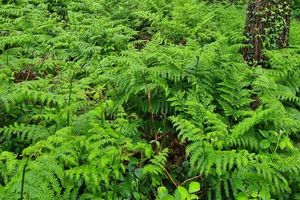 In the early spring, Fiddlehead Ferns appeared signaling the end of winter and the provision of another food source. The young fern heads appeared in damp, dense, wooded areas that made them available to rural populations.
In the early spring, Fiddlehead Ferns appeared signaling the end of winter and the provision of another food source. The young fern heads appeared in damp, dense, wooded areas that made them available to rural populations.
Related: The Forager’s Guide To Wild Foods
Packed with nutrients and soothing for digestion, people put these in salads, stews, and also canned them.
Milkweed Pods
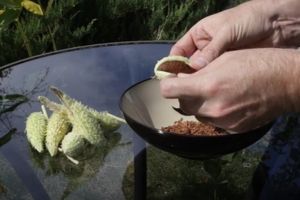 Milkweed pods were collected in the fall and boiled twice to get rid of their bitter taste.
Milkweed pods were collected in the fall and boiled twice to get rid of their bitter taste.
However, the plant was plentiful. It grew throughout the US, even in areas that lacked irrigation during the midwestern drought.
Milkweed contains vital properties for reducing cold, cough and flu symptoms. This was invaluable at a time when immunity was low across local communities and in just about all families.
Nettle Leaves And Sycamore Seeds
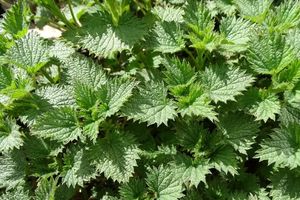 Nettle leaves have to be harvested properly because there are spikes on the perimeter of the leaves.
Nettle leaves have to be harvested properly because there are spikes on the perimeter of the leaves.
However, the Irish knew the wealth contained in this plant.
Full of iron, minerals and vitamins it was a one-stop shop, similar to lamb’s quarters.
It was best sauteed, and canned for the winter months. As a medicinal remedy, it was superior for respiratory ailments, digestive issues, and liver complaints.
Sheep Sorrel and Shepherd’s Purse had similar benefits to Dandelion but were not as bitter. Both were known to and used by descendants of the Irish because they feed domestic livestock. However sheep sorrel was a prime substitute for lettuce.
Found along the eastern seaboard, the midwest and even as far west as Arizona, Sycamore seeds were plentiful. The seeds are packed with iron, calcium magnesium and other essential minerals like niacin and zinc. Both seeds and fruit can also help dysentery, colds and coughs. Seeds were also ground and made into flour.
Hard times necessitate creativity and ingenuity. Although devastating to many, the legacy of resourcefulness our grandparents have left us is invaluable.
Shortages will occur, and climates change, yet our plant allies remain, offering us greater nutritional value than many other foods, along with countless additional uses.
The Forager’s Guide to Wild Foods provides advice on how to harvest wild foods, how to recognize the best plants and herbs in your backyard, and how to employ tried-and-true foraging techniques to maximize the nutritional content of foraged foods. Dr. Nicole Apelian is an herbalist, biologist, survival skills educator, and mother who wrote The Forager’s Guide to Wild Foods. In a thorough foraging book, Dr. Apelian compiled her decades of research. These days, anyone can utilize the book to discover forging materials nearby.
Anyone can join.
Anyone can contribute.
Anyone can become informed about their world.
"United We Stand" Click Here To Create Your Personal Citizen Journalist Account Today, Be Sure To Invite Your Friends.
Humic & Fulvic Liquid Trace Mineral Complex
HerbAnomic’s Humic and Fulvic Liquid Trace Mineral Complex is a revolutionary New Humic and Fulvic Acid Complex designed to support your body at the cellular level. Our product has been thoroughly tested by an ISO/IEC Certified Lab for toxins and Heavy metals as well as for trace mineral content. We KNOW we have NO lead, arsenic, mercury, aluminum etc. in our Formula. This Humic & Fulvic Liquid Trace Mineral complex has high trace levels of naturally occurring Humic and Fulvic Acids as well as high trace levels of Zinc, Iron, Magnesium, Molybdenum, Potassium and more. There is a wide range of up to 70 trace minerals which occur naturally in our Complex at varying levels. We Choose to list the 8 substances which occur in higher trace levels on our supplement panel. We don’t claim a high number of minerals as other Humic and Fulvic Supplements do and leave you to guess which elements you’ll be getting. Order Your Humic Fulvic for Your Family by Clicking on this Link , or the Banner Below.
Our Formula is an exceptional value compared to other Humic Fulvic Minerals because...
It’s OXYGENATED
It Always Tests at 9.5+ pH
Preservative and Chemical Free
Allergen Free
Comes From a Pure, Unpolluted, Organic Source
Is an Excellent Source for Trace Minerals
Is From Whole, Prehisoric Plant Based Origin Material With Ionic Minerals and Constituents
Highly Conductive/Full of Extra Electrons
Is a Full Spectrum Complex
Our Humic and Fulvic Liquid Trace Mineral Complex has Minerals, Amino Acids, Poly Electrolytes, Phytochemicals, Polyphenols, Bioflavonoids and Trace Vitamins included with the Humic and Fulvic Acid. Our Source material is high in these constituents, where other manufacturers use inferior materials.
Try Our Humic and Fulvic Liquid Trace Mineral Complex today. Order Yours Today by Following This Link.




.jpg)
.jpg)


